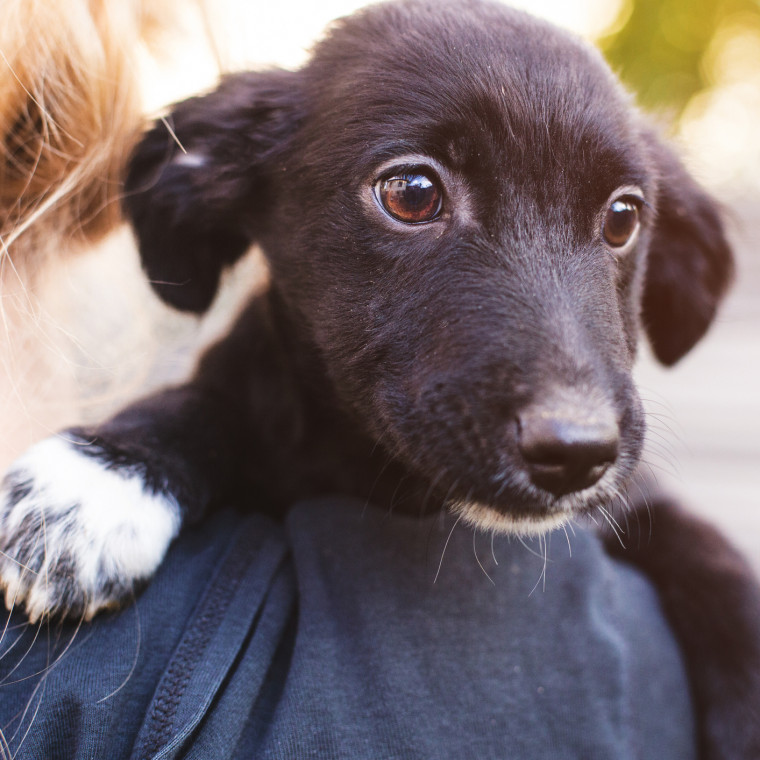Working At The Roots: How Animal Advocates Can Become Critical Allies Against Domestic Violence and Animal Cruelty
Open gallery

Since 1987, October has been recognized as National Domestic Violence Awareness Month (NDVAM). It originated from a Day of Unity started by the National Coalition Against Domestic Violence in 1981 to unite advocates across the country who were working to stop violence. To most, it’s an occasion that sparks images of human victims. For those who understand the Link between domestic violence and animal cruelty, it’s an occasion to also consider victims who happen to have fur, feathers, or fins.
Animal advocates can play an important role in stopping violence against human and non-human animal victims. To more effectively address the Link, however, it’s important for animal advocates to learn more about the dynamics of abuse and to become allies with our colleagues in the anti-violence movement. Below, is a brief overview of the Link and three action items that animal advocates can take in honor of NDVAM as we work in unity against violence.
The Link Between Animal Cruelty and Domestic Violence
The Link between animal cruelty and domestic violence is not new—but it is now, at long last, becoming well-recognized by the public. A consensus of research and wide-range of professionals confirm that when there is domestic violence (or intimate partner violence) in a household, animals are usually victims, too. Studies dating back to the late 1990s found that as many as 71% of victims reported that their abusive partner had threatened, harmed or killed their animals.
It is not surprising that those who abuse their partners, likewise abuse other vulnerable members of the household—children and animals. One study found that in homes where there was domestic violence or physical abuse of children, the incidence of animal cruelty was close to 90 percent.
Likewise, those who hurt animals often hurt humans outside their family. While not every animal abuser becomes a serial killer, it is nonetheless true that serial killers commonly engage in repeated and depraved acts of animal abuse prior to targeting humans. Notorious examples include Jeffrey Dahmer, the Son of Sam, the Happy Face Killer, and Albert DeSalvo (the Boston Strangler).
Greater understanding of the Link between animal cruelty and human violence has inspired important legislative advancements for both human and non-human animal victims. For example, 35 states and the District of Columbia and Puerto Rico now have laws to help victims protect their animals when seeking a domestic abuse restraining order. While animal cruelty should always have been the worthy of legislative attention in its own right, increased recognition of the Link has motivated legislators nationwide to take animal cruelty more seriously.
Growing recognition of the Link has also resulted in a greater emphasis on the enforcement of animal cruelty crimes. For example, the National Sherriff’s Association, in conjunction with the United States Department of Justice, encourages investigation and prosecution of animal cruelty crimes as a potential opportunity for early intervention, labeling animal cruelty as “a gateway crime”.
How Animal Advocates Can Become Allies Against Domestic Violence
Given the interrelationship between violence to humans and violence to non-human animals, particularly in the family setting, what are some actions that animal advocates can take to unite against domestic violence in honor of NDVAM? A focus on the Link, without learning more about domestic violence, misses an important opportunity for animal advocates to also become advocates for human victims of abuse (which ultimately redounds to the benefit of animals as the link comes full circle). Below are three suggested action items animal advocates can take right now:
Action One: Learn about the dynamics of abuse. One of the many myths about domestic violence is that abusers simply have an “anger management” problem. That is not only incorrect, it grossly oversimplifies a complex issue. Abusers typically do not target their bosses, their friends, or their neighbors. Rather, they carefully exercise power and control over their partner through isolation, denigration, objectification, and by forcing their partner to become reliant upon the abuser for survival. When animals are targeted by an abuser, it is part of this dynamic. The abuser controls the victim by hurting a loved one (the victim’s beloved animal) and/or to make a symbolic show of power of what the abuser can do to the victim. Understanding this dynamic is important to effective solutions. In the case of People v. Garcia, the court recognized that when an abuser killed the victim’s pet goldfish by stomping on the fish in front of her child, in addition to constituting animal cruelty, the defendant’s actions also “clearly evince defendant’s understanding and intention of inflicting emotional pain on both the boy and his mother.” The case presents a striking example of how animal abuse can become part of the dynamics of abuse.
Action Two: Learn to have an informed conversation about domestic violence. Language matters. It is already difficult for victims to seek safety due to fear of judgment. As a society, we routinely make this situation worse by, for example, asking why the victim doesn’t leave. In doing so, we place the emphasis on the wrong party. Like asking what a sexual assault victim was wearing, the question judges the victim and fails to place responsibility where it belongs — on those who commit acts of violence. Moreover, the question ignores the complex and plentiful barriers to a victim’s safety (including lack of safe shelter for a companion animal). During the pandemic, those barriers have only intensified, so much so that the United Nations has designated domestic violence as “The Shadow Pandemic”. When talking about domestic violence, words matter. Take time to learn how to have an informed conversation about domestic violence that doesn’t play into victim-blaming, stereotyping, or other myths. To begin, here are 10 Tips To Have an Informed Conversation About Domestic Violence.
Action Three: Learn about the unique experiences of marginalized victims. Domestic violence is an intersectional issue. There is no single type of victim. Many victims face a variety of oppressions throughout society that complicate or inhibit their ability to seek services: racism, sexism, classism, ableism, heterosexism, language barriers, immigration status, and more. These interlocking systemic oppressions harm the most marginalized victims and require thoughtful understanding and unique solutions. There is no one-size-fits all approach. To effectively combat violence, we must consider all forms of oppression that contribute to it and strive for ways to improve support networks for the most marginalized victims who are most at risk.
Conclusion
Attorney George T. Angell was once asked why he spent so much time and money working for kindness to animals when there is so much cruelty to humans. He famously answered, “I’m working at the roots.” Animal advocates have long understood the roots of violence. Research documenting the Link now bears it out. As animal advocates we can expand our circle of compassion even further, by becoming allies with our colleagues working to end domestic violence. We can more effectively stop all violence, by uniting together for the benefit of all victims.

Megan Senatori is the Director of Strategic Initiatives at the Center of Animal Law Studies. For almost twenty years, she has run an all-volunteer domestic abuse shelter program that provides temporary, safe and confidential shelter to the animals of domestic abuse victims while the victim seeks safety from an abuser. She is a frequent speaker and author on the Link. This summer, she will teach Companion Animal Law and Policy in CALS Animal Law Summer School.

The Center for Animal Law Studies (CALS) was founded in 2008 with a mission to educate the next generation of animal law attorneys and advance animal protection through the law. With vision and bold risk-taking, CALS has since developed into a world-renowned animal law epicenter, with the most comprehensive animal law curriculum offered anywhere. In addition, CALS is the only program that offers an advanced legal degree in animal law and three specialty Animal Law Clinics. CALS is a completely self-funded nonprofit organization operating under the Lewis & Clark College 501(c)(3) tax exemption, and is only able to provide these educational opportunities through donations and grants.
More Center for Animal Law Studies Stories
Center for Animal Law Studies is located in Wood Hall on the Law Campus.
MSC: 51
email cals@lclark.edu
voice 503-768-6960
Center for Animal Law Studies
Lewis & Clark Law School
10101 S. Terwilliger Boulevard MSC 51
Portland OR 97219

